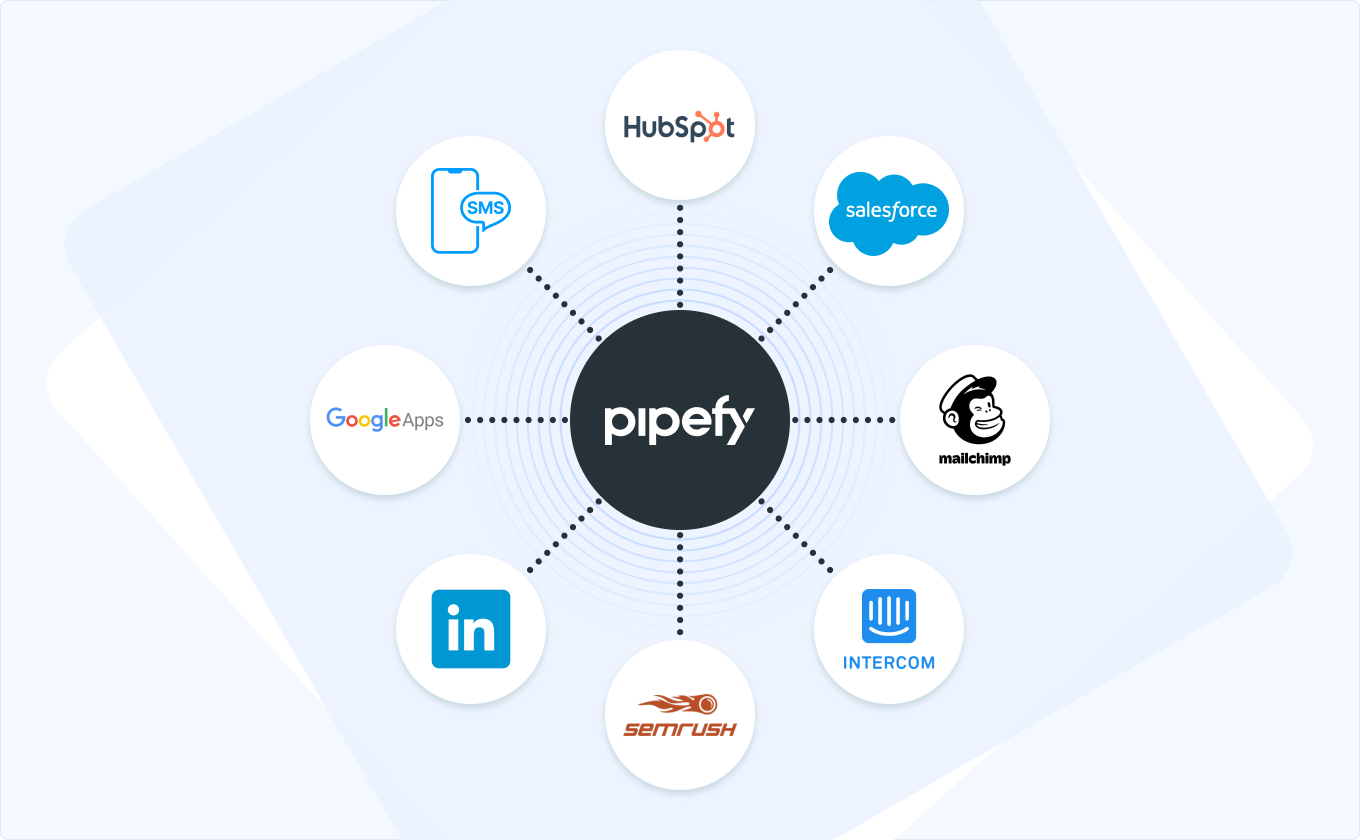
Organizations have always been obsessed with process management. In fact, about two decades ago, in the midst of a series of accounting scandals and the passing of Sarbanes-Oxley, as a researcher at the University of Illinois, Urbana-Champaign, I spent a lot of time around organizational processes and control environments as it related to financial activities.
Fueled by escalating data and compliance requirements and combined with the power of the cloud, organizations continued to adopt business process management frameworks to accelerate their ability to respond to the emerging challenges. In fact, it was in the 2000s that Gartner first coined the term Business Process Management (BPM) to describe the category of software tools that execute processes by either machines or personnel.

Twenty years later, with COVID-19, business process management is undergoing another quiet revolution. As Satya Nadella, CEO of Microsoft stated at the outset of the outbreak, “We’ve seen two years’ worth of digital transformation in two months. From remote teamwork and learning, to sales and customer service, to critical cloud infrastructure and security—we are working alongside customers every day to help them adapt and stay open for business in a world of remote everything.” With two-thirds of businesses recognizing that digital transformation is necessary for their long-term success and IDC estimating organizations losing 20-30% of their revenue every year due to process inefficiencies, over $2.2 billion have been invested in technology companies building workflow automation solutions.
Traditional BPM frameworks and software impeded digital transformation
Equally impressive and unfortunate, is that Harvard Business Review (HBR) estimates over $900 billion of digital transformation initiatives did not succeed. Researchers argued that while digital technologies provided the possibilities of improving efficiencies, organizations lacked the mindset to change practices and that digital transformation simply amplified those flaws. In fact, researchers have argued that traditional BPM approaches, which work on AS-IS/TO-BE paradigm are limited in executing such digital transformation given the gap between planning and execution and lack of user buy-in.
Current approaches to BPM still work on the AS-IS/TO-BE paradigm, inherited from the Business Process Reengineering (BPR) era from the nineties. BPR is a top-down, holistic, and cross- cutting approach that takes months of analysis and impact assessment to achieve. (Morgan, 2002; Cumberlidge, 2007). The problems with the AS-IS/TO-BE approaches are related to the temporal gap between the modeling and implementation phases as well as the lack of involvement of the users. These problems have created a gap between business and Information Technologies (IT), where the business has always believed that IT does not understand the semantics of business processes, while IT believes that the business has no conception on what it takes for automated business processes to execute successfully (R. Meziani and R. Magalhães, “Proposals for an Agile Business Process Management Methodology.” 2009).
Researchers would further contend that the BPM methodologies themselves aren’t flawed, rather, as HBR highlights, the organization might not be set up, whether it be structure and/or communication cadences to successfully execute on the BPM project and unlock the benefits of digital transformation.
BPM modeling methods present advantages or disadvantages according to a host of different issues. The organization’s business process modeling requirements differ and so do the environments where the models are to be used (Bider, Choosing Approach to Business Process Modeling – Practical Perspective.” Research Report, IbisSoft. 2005).
Agile BPM frameworks as a key enabler for digital transformation
In light of the organizational headwinds, both researchers and practitioners have contended that Agile as a key framework for safeguarding digital transformation for two reasons:
- Agile provides a framework for rapid feedback and iteration
- Agile drives a broader cultural shift in an organization
Researchers acknowledge that the underpinning backdrop to propose any business process management solution to execute the digital transformation includes the following (Rito-Silva et al., 2009):
Incompleteness: The process does not need to be completely understood.
- Trying to completely understand a process is time expensive, reducing the number of feedback cycles and increasing the chances that automated processes do not conform to organizational needs.
- The process does not need to be completely specified in the sense that it is allowed that activities not pre-specified occur in some of its instances. This allows the instantaneous adaptation of processes, instances, to the emergence of new organizational needs.
- Incompletely defined processes should be executable and its execution should integrate planned and unplanned activities so as not to limit normal operations.
Empowering people:
- Processes should promote collaboration, creativity and intelligence instead of restricting them.
- The system should allow people to perform unplanned activities and integrate them with planned activities.
Business process design should be integrated with usage of technology
- To avoid a situation of paralysis by analysis due to different perspectives on processes, a modeling approach based on the operation of the business should be enforced. This way, the different perspectives on process modeling will be focused on bottom-up leveraging of the actual operation of the business.
- Integrate the execution and modeling of the process, such that the process executor is also one of its modelers. (R. Meziani and R. Magalhães 2009)
As a business practitioner, the above is a refreshing acknowledgement of the change management headwinds that organizations face when executing digital transformation.

Pipefy and agile digital transformation framework
At Pipefy, we strive to ensure that our workflow platform has ‘agile’ in mind. We empower ‘doers’ to drive change by providing the most flexible platform that incorporates academic research:
1. Incompleteness: The pareto optimal process vs. the “complete” process
As research indicates, most organizations don’t have the complete process mapped out and may not have the sophisticated internal alignment points. In light of this organizational paradigm, our users first focus on a business process that drives a Pareto optimal outcome.
We have several large multinational corporate managed ‘elements’ of procurement processes that require complex interactions with legal, IT, security, and support organizations and integrate to the ERP and Contract Management Systems to generate PO with the underlying contract collateral. For example, a procurement manager might not know the ‘complete process’ on how to drive General Data Protection Regulation (GDPR) or embracing zero-carbon footprint goals from the Paris Accord. However, leveraging Pipefy’s low code/ no-code interface, within minutes he or she can build simple workflows such as:
- For agreements greater than $100,000, involving inventory or physical assets, require supplier to complete a form (also built on Pipefy) with carbon emission questionnaire → leveraging Pipefy’s 500+ integrations route for Purchase Requisition Approval process in ERP Or
- For agreements greater than $100,000, involving software and integrations requiring customer or employee data, require supplier to complete a form with GDPR questionnaire → leveraging Pipefy’s 500+ integrations route for Purchase Requisition Approval process in ERP
Rudimentary, yet effective as a starting point. Simple rules like this prevent hours of meetings and/or complex IT project overhead. Our goal is to deliver immediate value and scale with the process and organizational maturity. We have seen organizations start with 1-2 processes with a handful of rules and triggers, within months scale to 200+ processes and over 2000+ rules around automation and routing entirely powered by the business owner.
2. Empowering people: Loved by users, scaled by IT
Recently, I was on a call with a large multinational company that needed to integrate gasoline surcharges into its invoicing process. The product and development team scrambled and deployed a handful of developers to quickly calculate the surcharge based on freight destination point and launched the product to meet the deadline. Unfortunately, post launch several issues emerged:
- Customers had contracts that at times conflicted with the fuel charge calculation
- The initial rules didn’t contemplate evolving nature of business service (e.g. FOB shipment vs. FOB destination or rerouting due to weather / logistics)
- It was unclear for the finance team how to easily replicate the calculation when customers requested chargebacks
The challenge now became getting the adequate development resources to solve this ‘last-mile’ problem in invoicing customers and maintaining the algorithm as customer and business requirements escalated rapidly post launch.
As with the above customer, we have several IT and development professionals caught in the crossfire of business requirements and limited resources. Developers are of course a scarce resource, and inevitably the ‘last-mile’ issues don’t scale to the top of the list in their sprints.
Pipefy’s dynamic database combined with its intuitive low-code / no-code workflow and routing logic enables business process owners to create complex applications like developers. In fact, we have large public and private institutions where business owners built end-to-end business applications, e.g. mortgage and vehicle loan application processing on our platform, while IT plays an active role purely from a monitoring and security perspective. In essence, Pipefy can quickly build calculations on its back-end using user-defined rules that are intuitive and trigger the necessary action integrated with the ERP systems without any coding.

3. Integrated with usage of technology: Integrations to enable change
While Pipefy is a technology solution, we recognize that in the ‘wild-west’ of the long-tail process, we cannot be the only solution. In fact, we actively work on integrating with over 500 applications to ensure that business process managers can leverage their technical stack to solve complex problems. At one customer, we leverage our OCR technology, we drove a 66% reduction in the number of manual touches to approve POs in Oracle through automation. Further, we can also integrate with other automation tools (e.g. UiPath, Blueprism) to accelerate automation for more high-volume cases where unsupervised machine learning can identify even more nuanced automation. In short, Pipefy’s philosophy is to be an ecosystem player and leverage the best technology to solve the business process problem at hand.

Pipefy is built with agile digital transformation in mind
Clearly, one of the key drivers of digital transformation efforts is the Business Process Management industry which is expected to cross $23 billion by 2024. At Pipefy, we want to be a key player in this phenomenal journey and drive digital transformation at scale. Our methods are grounded in deep research and academia while incorporating the feedback from 3,000+ customers across 150+ countries. Our mission is to help ‘doers’ deliver change by leveraging core tenants of the Agile framework.






